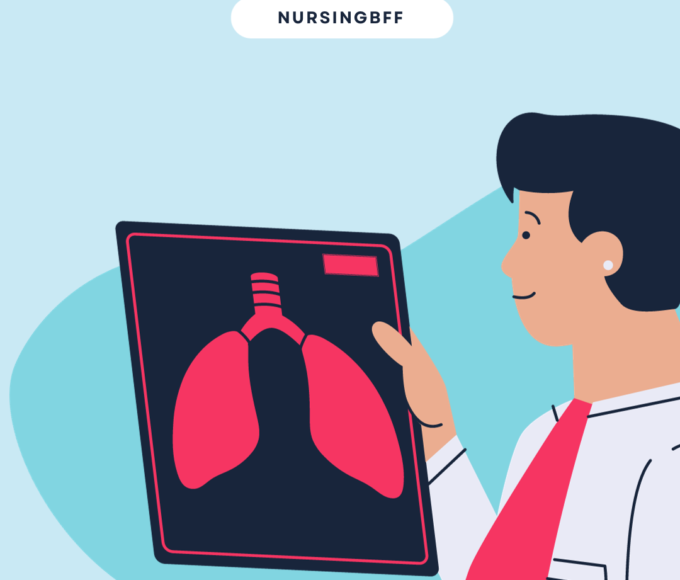

Chronic obstructive pulmonary disease (COPD) is a common and progressive respiratory condition that affects millions of people worldwide. COPD is characterized by chronic inflammation of the airways, leading to airflow limitation, mucus production, and impaired gas exchange. COPD can cause symptoms such as shortness of breath, cough, wheezing, chest tightness, and fatigue. COPD can also increase the risk of complications such as respiratory infections, pulmonary hypertension, heart failure, and depression. Check out how to Write a Complete Nursing Care Plan for COPD Patients.
As a nurse, you play a vital role in caring for patients with COPD and helping them manage their condition. In this blog post, we will discuss some of the nursing interventions that you can implement for a COPD patient, based on the nursing care plans from various sources .
1. Assess the patient’s respiratory status. This includes measuring the oxygen saturation, listening to the lung sounds, asking about the cough and any mucus that comes up, asking what kinds of exercise or activities the patient can tolerate, checking the legs for swelling, checking the size and shape of the chest, and drawing blood for testing. This will help you identify the severity of the COPD, the presence of any complications, and the need for any interventions.
2. Provide oxygen therapy as ordered. Oxygen therapy can help improve the oxygen delivery to the tissues and reduce the workload of the heart and lungs. You should instruct the patient on how to use supplemental oxygen at home, monitor the oxygen flow rate and duration, and check for any signs of oxygen toxicity or hypoventilation.
3. Administer bronchodilators as ordered. Bronchodilators are medications that relax the smooth muscles of the airways and improve airflow. They can be delivered by inhalers, nebulizers, or oral routes. You should teach the patient how to use the inhalers correctly, observe for any side effects such as tachycardia or tremors, and evaluate the effectiveness of the bronchodilators.
4. Assist with chest physiotherapy and postural drainage as needed. Chest physiotherapy involves techniques such as percussion, vibration, and breathing exercises that help loosen and remove mucus from the lungs. Postural drainage involves positioning the patient in different ways to facilitate gravity-assisted drainage of mucus from different lung segments. You should perform these interventions before meals or at least 2 hours after meals to prevent vomiting or aspiration.
5. Encourage fluid intake and nutrition. Fluid intake can help thin mucus and prevent dehydration. Nutrition can help maintain weight and muscle strength, which are important for respiratory function. You should encourage the patient to drink at least 2 liters of water per day, unless contraindicated by other conditions such as heart failure or renal failure. You should also provide a balanced diet that is high in protein, calories, vitamins, and minerals, and low in salt, fat, and simple carbohydrates.
6. Educate the patient about COPD and self-management strategies. Education is essential for empowering the patient to cope with their condition and prevent exacerbations. You should explain to the patient what COPD is, what causes it, what are the risk factors and complications, how to monitor their symptoms and use a peak flow meter, how to take their medications properly and avoid triggers, how to perform controlled breathing and coughing techniques, how to conserve energy and pace activities, how to quit smoking and avoid secondhand smoke, how to access community resources and support groups, and when to seek medical attention.
7. Provide emotional support and counseling. COPD can have a significant impact on the patient’s quality of life, mental health, and social relationships. COPD can cause anxiety, depression, isolation, anger, frustration, guilt, and low self-esteem. You should provide a supportive and empathetic environment for the patient to express their feelings and concerns. You should also assess for any signs of depression or suicidal ideation and refer them to appropriate mental health services if needed.
8. Collaborate with other healthcare professionals. COPD is a complex condition that requires a multidisciplinary approach to care. You should work closely with other healthcare professionals such as physicians, respiratory therapists, physical therapists, occupational therapists, dietitians, social workers, pharmacists, and case managers to ensure that the patient receives comprehensive and coordinated care that meets their individual needs and goals.
Related Articles
How to Identify your Time Wasters and Eliminate them
Certainly! Let’s talk about time wasters at work. These are activities or...
By Roberta DivaFebruary 21, 2024Nursing Care Plans for Acute Renal Failure
Acute renal failure (ARF), also known as acute kidney injury (AKI), is...
By Nursing BFFNovember 4, 2023Acute Renal Failure
Acute renal failure, also known as acute kidney injury, is a condition...
By Nursing BFFNovember 4, 2023How to Write a Complete Nursing Care Plan for COPD Patients
Chronic obstructive pulmonary disease (COPD) is a common and serious lung condition...
By Nursing BFFNovember 2, 2023







Leave a comment